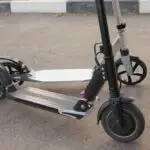Maintaining your bike’s front derailleur is crucial for smooth shifting and an enjoyable riding experience. One of the most popular groupsets among cyclists is the Shimano 105, known for its reliability and performance. In this article, we’ll walk you through adjusting a Shimano 105 front derailleur, discussing key steps and potential implications to keep in mind. Whether you’re a seasoned rider or a newbie, this guide will help you efficiently perform a Shimano 105 front derailleur adjustment.
Why Adjust Your Shimano 105 Front Derailleur?
Properly adjusting your Shimano 105 front derailleur ensures precise and smooth gear shifts, prevents chain drops, and reduces drivetrain wear. Misalignment can lead to frustrating ride experiences, including noisy shifts and difficulty changing gears. By learning how to adjust your front derailleur, you can maintain optimal performance and extend the life of your bike components.
Tools You’ll Need
Before starting the adjustment process, gather the necessary tools:
– Allen wrenches (usually 4mm and 5mm)
– Phillips screwdriver
– Bike stand (optional, but highly recommended for ease of access)
Steps to Adjust Shimano 105 Front Derailleur
-
Initial Setup
Place your bike on a stand to keep it stable. Shift the chain to the smallest chain in the front and the largest cog in the rear. This position will give you the most slack in the cable, making adjustments easier.
-
Check the Height and Angle
The front derailleur should be positioned 1-3mm above the largest chainring. Use an Allen wrench to loosen the derailleur clamp bolt and adjust the height if necessary. The cage of the derailleur should be parallel to the chainrings. Adjust the angle by rotating the derailleur body as needed before tightening the clamp bolt.
-
Adjust the Limit Screws
The front derailleur has two limit screws: the high limit screw (H) and the low limit screw (L). These screws control the maximum inward and outward movement of the derailleur.
- Low Limit Screw (L): Shift to the smallest chainring and largest rear cog. Adjust the L screw so that the inner plate of the derailleur cage is 1-2mm away from the chain.
- High Limit Screw (H):** Shift to the largest chainring and smallest rear cog. Adjust the H screw so that the outer plate of the derailleur cage is 1-2mm away from the chain.
-
Set the Cable Tension
Shift back to the smallest chainring. Use the barrel adjuster on the shifter to fine-tune the cable tension. The goal is to ensure the derailleur moves smoothly between chainrings without hesitation. If the derailleur hesitates or fails to shift, increase the cable tension. If it overshoots or struggles to return, decrease the tension.
-
Test Shifting Performance
Shift through all the gears to check the derailleur’s performance. Ensure that the chain moves smoothly between the chainrings without rubbing or noise. Make small adjustments to the cable tension or limit screws as needed.
Potential Implications of Improper Adjustment
Chain Drops
Incorrect adjustments can cause the chain to drop off the chainrings, either inward towards the bottom bracket or outward of the largest chainring. This can be dangerous, especially while riding at high speeds.
Excessive Wear
Misalignment causes undue stress on the chain and chainrings, leading to accelerated wear and the need for more frequent replacements. This can be costly over time and affect your bike’s overall performance.
Poor Shifting Performance
An improperly adjusted derailleur will result in poor shifting performance, making it difficult to change gears smoothly. This can be frustrating and diminish your riding experience, especially during climbs or sprints.
Noise and Friction
A misaligned derailleur can cause the chain to rub against the cage, creating annoying noise and unnecessary friction. This not only affects ride quality but also leads to energy loss, making pedalling less efficient.
Adjusting the front derailleur on your Shimano 105 groupset is a vital maintenance task that ensures smooth and efficient shifting. By following the steps outlined above, you can confidently perform a Shimano 105 front derailleur adjustment. Remember to check the height and angle, adjust the limit screws, set the cable tension, and test the shifting performance. Proper maintenance will enhance your riding experience, prevent mechanical issues, and extend the life of your bike components.





